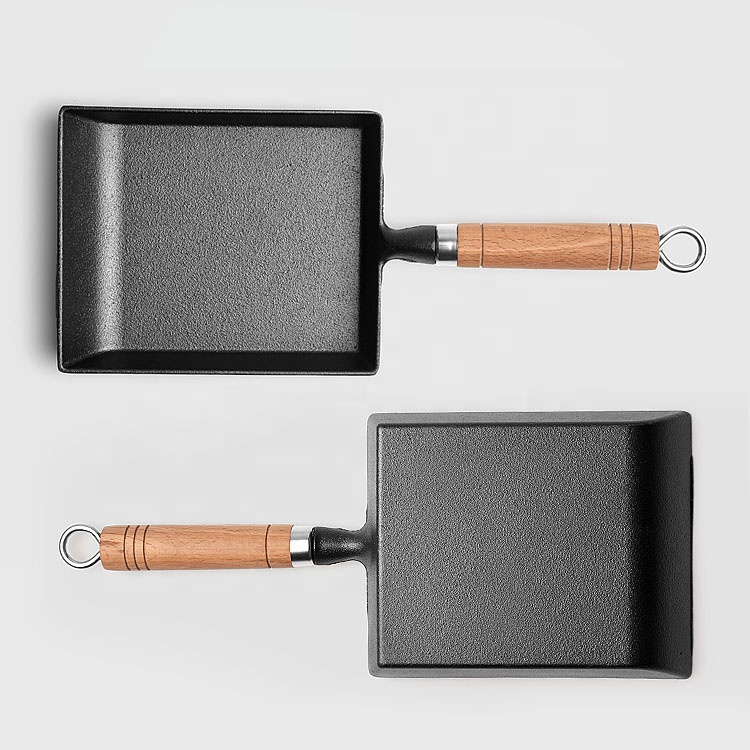
cast iron corn stick pan
The Versatility and Benefits of Cast Iron Corn Stick Pans
In the world of cooking, few materials have proven to be as versatile and durable as cast iron. Among the myriad of cooking tools available, the cast iron corn stick pan holds a special place, marrying tradition with functionality. This unique cookware is not just a culinary artifact but a gateway to exploring delicious cornbread and other corn-based recipes that can enhance your dining experience.
What is a Cast Iron Corn Stick Pan?
A cast iron corn stick pan is a specially designed baking pan that features multiple narrow slots, shaped like cornsticks, to create elongated, crispy cornbread sticks. These pans are typically constructed from heavy-duty cast iron, a material known for its remarkable heat retention and even cooking properties. The pan's unique design allows it to create a crispy texture on the outside while keeping the inside moist and flavorful, making it perfect for cornbread lovers.
Historical Significance
The practice of using cast iron pans dates back centuries, particularly in American history. Cast iron cookware was a staple in colonial kitchens, praised for its durability and ability to distribute heat evenly. The corn stick pan has its roots in Southern cuisine, where cornbread is a beloved dish. Making cornbread in these pans became a tradition, yielding not only delicious results but also promoting a sense of community and family gatherings around the dinner table.
Benefits of Using a Cast Iron Corn Stick Pan
1. Heat Retention and Distribution Cast iron is renowned for its ability to retain heat, which allows for even cooking. This is especially important when baking cornbread, as uneven heat can lead to inconsistent results. With a cast iron corn stick pan, you can achieve perfectly baked sticks every time.
2. Non-Stick Surface When properly seasoned, cast iron provides a natural non-stick surface that improves with use. This means you can achieve a golden, crispy crust on your cornsticks without worrying about them sticking to the pan. Regular seasoning enhances this non-stick capability, making cleanup a breeze.
cast iron corn stick pan

3. Versatility While the primary use of a corn stick pan is for baking cornbread, its versatility extends far beyond. You can use it for baking mini quiches, making polenta sticks, or even for roasting vegetables. Its shape and size make it a fantastic tool for creative culinary endeavors.
4. Health Benefits Cooking in cast iron can add a small amount of iron to your diet, which is essential for health. This is especially beneficial for individuals who may not be getting enough iron from other dietary sources.
5. Durability and Sustainability Cast iron cookware can last a lifetime, often being passed down through generations. Its durability makes it a sustainable choice in a world of disposable kitchenware, reducing the need to replace worn-out pans frequently.
Caring for Your Cast Iron Corn Stick Pan
To maintain your cast iron corn stick pan and ensure its longevity, it's important to follow a few simple care guidelines. After each use, clean the pan with warm water and a stiff brush, avoiding soap unless necessary, as it can strip the seasoning. Once clean, dry the pan thoroughly and apply a light coat of vegetable oil to prevent rusting. Store it in a dry place to keep it in optimal condition.
Conclusion
The cast iron corn stick pan is more than just a tool; it's a vessel for delivering delightful flavors and memories to your kitchen. Whether you're preparing a traditional Southern cornbread recipe or experimenting with new corn-based dishes, this versatile pan can elevate your cooking to new heights. Its historical significance, coupled with its practical benefits, makes it a valuable addition to any kitchen.
Embrace the opportunity to wield a piece of culinary history by incorporating a cast iron corn stick pan into your cooking routine. The next time you gather with family and friends, serve up a batch of golden, delicious cornsticks, and relish the joy that good food can bring. With a cast iron corn stick pan, you're not just cooking; you're creating a rich tapestry of flavor, history, and community around your table.
-
Authentic Traditional Chinese Wok for High-Performance CookingNewsAug.02,2025
-
Season Cast Iron Perfectly with GPT-4 Turbo TipsNewsAug.01,2025
-
High Quality Cast Iron Cookware - Baixiang County Zhongda MachineryNewsAug.01,2025
-
Premium Cast Iron Pan: Durable & Perfect HeatNewsAug.01,2025
-
High Quality Kitchen Durable Black Round Cast Iron Cookware Pancake Crepe Pan-Baixiang County Zhongda Machinery Manufacturing Co., Ltd.NewsAug.01,2025
-
Cast Iron Cookware - Baixiang County Zhongda Machinery | Nonstick, Heat ResistanceNewsAug.01,2025


